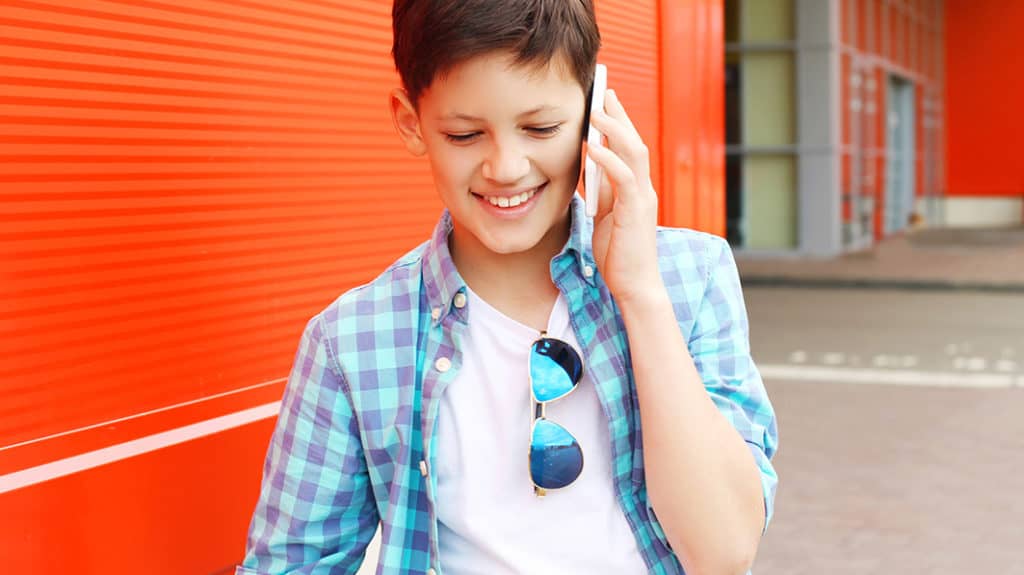
Go From “Gimme” to Grateful Kids
Teaching children to be grateful and generous is a Christmas gift that can last a lifetime.
March 7, 2018

Are your children truly grateful for what they have? Here are ways parents can create a lasting attitude of gratitude in children.
Estimated reading time: 5 minutes
When Shane and Anna’s tween-age son, Jared, broke his iPhone, they bought him a new one. Jared took the phone with no remorse for how he’d treated his previous one and no thanks for getting the most recent iPhone on the market. When Shane and Anna confronted Jared about it, Jared muttered a simple thanks and then returned his attention to his phone.
“He just expected that he should have a phone — no matter how he abused it — and that his mother and I should give it to him just because,” Shane told me, expressing amazement and frustration. “Jared showed no sense of gratitude for the sacrifice we made so he could have that privilege.”
While saying, “Thanks, Mom and Dad, for buying me a new phone” is certainly important, gratitude is more about what’s behind the words. True gratitude is a way of viewing things. It’s a state of amazement over all the things God has given us and done for us. It’s a mindset that realizes, Wow, I have a mom and dad. Wow, we have money for me to have a phone. And Mom and Dad care about me enough that they trust me with one of my own.
We live in a culture that teaches, I deserve it. Yet that mindset flies in the face of gratitude and can be devastating to our children’s mental health and well-being. As parents, we love our kids, we want them to be well-adjusted and happy, and we’d do just about anything for them. But if we aren’t careful, we can help create and enable within them the I deserve it mentality. To protect against that, as we teach our kids to say “please” and “thank you,” we also need to teach them what’s behind those words and how embracing an attitude of gratitude can help make them more mature and happier human beings.
One tactic advertisers use is to get us to focus on what we don’t have and convince us we’ll be dissatisfied until we own it — whatever “it” is. As parents, strive to instill the opposite perspective. That is what my wife and I tried to do. When we were teaching our children about gratitude, we intentionally took time to focus on what we did have rather than what we didn’t have.
Before our girls even started elementary school, we taught them the “I’m thankful for” game, where each person in turn names three things they are thankful for. As our children grew older, we encouraged them to name things that were deeper than just their possessions (such as being thankful for having a warm house to live in versus expressing thankfulness for their dolls and bicycles).
That game helped instill an ability to keep our kids’ focus on being “content with what you have” (Hebrews 13:5). So that when rough patches came, they were able to recall the good things in the midst of life not going the way they wanted.
When our girls wanted something, such as an expensive doll, we offered them opportunities to earn their own money. We helped them think of things they could do for friends and neighbors or items they could make and sell at craft shows. That way they learned the value of what things cost and instilled within them the desire to take care of those things themselves.
By middle school we had them on a budget, using the envelope method, in which they placed their hard-earned cash into an envelope so they could see exactly how much money they had. Until age 12 or 13, children are concrete in their thinking, so unless they can see money, handle it and actually give it to the cashier, money, budgets and value are too abstract for them to truly comprehend.
Understanding the actual cost in time and effort it takes to earn a dollar helps with gratitude. When they finally earned — and saved — enough money to purchase their own high-end dolls, they were grateful beyond measure.
As our children grew we exposed them to people who had less than they did. Talking about “the starving kids over in (wherever)” is too abstract. We wanted them to see, talk to and interact with real people who had less.
After each encounter, we would talk about what they saw and felt. We talked about God and that He’s good all the time, separate from what we have or don’t have. Summer mission trips, serving Thanksgiving meals to the homeless, volunteering at the community pantry or sponsoring a child through a sponsorship organization are just some of the ways we can expose our children to real people who have a lot less than they do.
When we purposefully choose to acknowledge what we do have, that is enough to cause us to be content. As written in Philippians 4:11-12, being content in all things is a discipline Paul says he had to “learn.” Truth be told, as my children and I considered what we had, we admitted that we were safe and well. We had our basic needs met, and then some. We actually could be content, for real. We just had to stop long enough to realize that truth and then verbalize it to one another.
After all, it isn’t “stuff” or even circumstances that cause contentment. Our focus on God and His faithfulness to us bring contentment. He will meet all our needs (Philippians 4:19) and He will never leave or forsake us (Deuteronomy 31:6).
Without a mindset of gratitude, our children will never be at peace or content. But when they practice the lyrics of an old hymn — “Count your blessings, name them one by one. Count your many blessings, see what God has done” — they will be rich and fulfilled beyond measure.